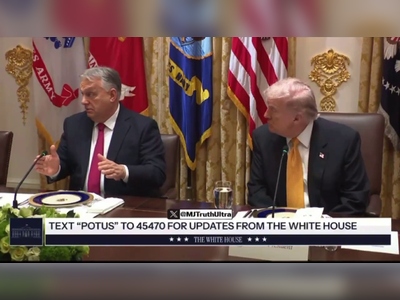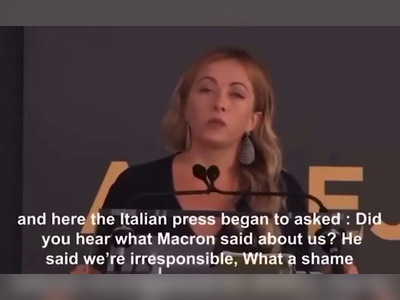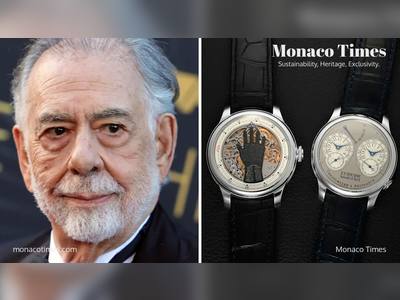Vatican Enters Uncertain Period Amid Pope's Hospitalization
As Pope Francis remains hospitalized, the Vatican navigates a complex landscape of activity and speculation.
In the heart of Rome, pilgrims and tourists continue to flock to St. Peter's Basilica, their movements a steady stream from dawn until dusk.
However, the atmosphere at the Vatican is overshadowed by uncertainty following the hospitalization of Pope Francis, the leader of the Roman Catholic Church, who has not been seen in public since February 14. The 88-year-old pontiff was admitted to the Gemelli hospital due to a double pneumonia and has yet to reappear.
For over 20 days, the Vatican has been enveloped in a 'grey zone,' where operations function under the weight of the unknown regarding the Pope's health.
Despite the usual bustling activity, live updates from news agencies fill the air, capturing interest from passersby, including curious children.
The papal absence has led to a significant reduction in extraordinary services such as masses, audiences, and receptions of ambassadors and heads of state.
The Swiss Guard, responsible for the Pope’s security, has noted a transition to a 'minimum service' model.
The current situation is likened to the slowdowns experienced during the COVID-19 pandemic.
Inside the Vatican, operations continue among the various dicasteries, the departments managing the Catholic Church's global outreach.
While the Pope's image remains prominent, these ministries largely proceed with their agendas.
Nonetheless, the uncertainty surrounding the Pope's health leaves many within the Curia apprehensive about future planning.
Health bulletins from the Vatican are now a part of daily life, with medical terminology replacing the usual discussions of canon law among observers.
Sources indicate a distinct atmosphere of stress within the community, oscillating between hope and fear regarding the Pope's recovery.
Some describe the emotional climate as akin to 'roller coasters,' as the challenges of each day unfold.
Historically, the Vatican has faced similar challenges.
For instance, Pope John Paul II spent 77 days at the Gemelli hospital after an assassination attempt in 1981, yet the prolonged hospitalization of Pope Francis, his longest to date, weighs heavily on the institution.
As rumors and speculation circulate about the possibility of a papal resignation and preparations for a potential conclave, discussions of the future remain largely off-limits while the Pope is living.
A source within the Secretariat of State emphasized the sensitivity around such topics, noting a cultural reluctance to engage in discussions about succession while the Pontiff's health remains in limbo.
Despite his hospitalization, Pope Francis has demonstrated continued engagement by communicating with followers and signing official documents.
However, he will not be present for traditional observances marking the start of Lent and the subsequent Holy Week services, including Easter, which occurs in 40 days.
As faith and uncertainty intertwine, nightly vigils in St. Peter’s Square provide a space for the faithful to pray for the pontiff’s recovery amid the backdrop of the Vatican's intricate internal dynamics.
However, the atmosphere at the Vatican is overshadowed by uncertainty following the hospitalization of Pope Francis, the leader of the Roman Catholic Church, who has not been seen in public since February 14. The 88-year-old pontiff was admitted to the Gemelli hospital due to a double pneumonia and has yet to reappear.
For over 20 days, the Vatican has been enveloped in a 'grey zone,' where operations function under the weight of the unknown regarding the Pope's health.
Despite the usual bustling activity, live updates from news agencies fill the air, capturing interest from passersby, including curious children.
The papal absence has led to a significant reduction in extraordinary services such as masses, audiences, and receptions of ambassadors and heads of state.
The Swiss Guard, responsible for the Pope’s security, has noted a transition to a 'minimum service' model.
The current situation is likened to the slowdowns experienced during the COVID-19 pandemic.
Inside the Vatican, operations continue among the various dicasteries, the departments managing the Catholic Church's global outreach.
While the Pope's image remains prominent, these ministries largely proceed with their agendas.
Nonetheless, the uncertainty surrounding the Pope's health leaves many within the Curia apprehensive about future planning.
Health bulletins from the Vatican are now a part of daily life, with medical terminology replacing the usual discussions of canon law among observers.
Sources indicate a distinct atmosphere of stress within the community, oscillating between hope and fear regarding the Pope's recovery.
Some describe the emotional climate as akin to 'roller coasters,' as the challenges of each day unfold.
Historically, the Vatican has faced similar challenges.
For instance, Pope John Paul II spent 77 days at the Gemelli hospital after an assassination attempt in 1981, yet the prolonged hospitalization of Pope Francis, his longest to date, weighs heavily on the institution.
As rumors and speculation circulate about the possibility of a papal resignation and preparations for a potential conclave, discussions of the future remain largely off-limits while the Pope is living.
A source within the Secretariat of State emphasized the sensitivity around such topics, noting a cultural reluctance to engage in discussions about succession while the Pontiff's health remains in limbo.
Despite his hospitalization, Pope Francis has demonstrated continued engagement by communicating with followers and signing official documents.
However, he will not be present for traditional observances marking the start of Lent and the subsequent Holy Week services, including Easter, which occurs in 40 days.
As faith and uncertainty intertwine, nightly vigils in St. Peter’s Square provide a space for the faithful to pray for the pontiff’s recovery amid the backdrop of the Vatican's intricate internal dynamics.









